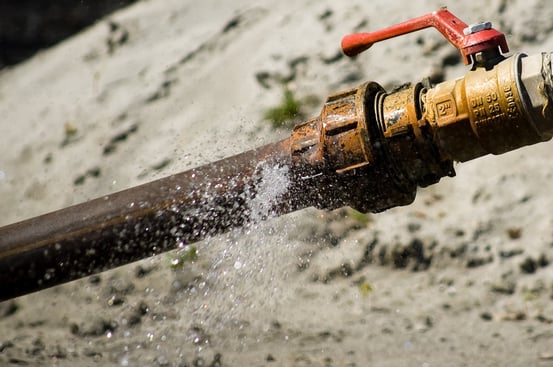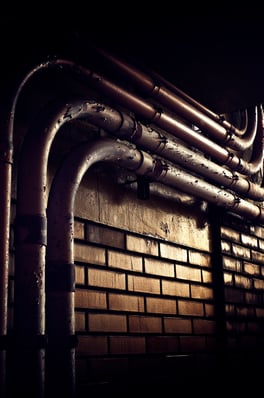The Team EJP Guide to Water Main Break Solutions
- Home
- Team EJP Blog
- The Team EJP Guide to Water Main Break Solutions
- Oct 19, 2015 9:26:07 AM
- Everett J. Prescott

According to the Water Main Break Clock, an average of 850 water main breaks occur on a daily basis in the U.S. That's more than one every two minutes. A particularly spectacular one at UCLA spewed out over 20 million gallons of water, flooding the campus as a 12" cast iron water main installed over 85 years ago gave way. Why do they do so much damage? Old iron pipes in corrosive soil eventually rust away, leaving a geyser or a mud hole behind for your maintenance workers to fix.
But fixing the problem isn't a one-size-fits-all solution. It can vary depending on what your exact situation is: pipe contraction, its supports, the amount of pressure and similar factors. In this post, we'll take a good look at different solutions to repair your water main and which situations they do best in.
What is the best fix for your scenario?
We're going to install new water mains . . . . eventually.
At this point, you need to make a temporary repair, but you're not quite sure just how temporary it will end up being in the long run. Your best bet is to make sure it's a good repair to prevent more problems in the future, when the new mains still haven't been replaced. When you're not sure what conditions will change down the road, the Macro HP provides the flexibility you need: 305 PSI working pressure, high-performance one-piece gasket and up to 10 degrees of deflection.
No, really, we're replacing them next year and have funding in place.
 Oh, you were serious about needing a temporary repair! Stainless steel repair clamps, much like the smaller ones used to repair house pipes, can be clamped down over the pipe to stop leaks. This works great if you have a small split that needs to be repaired from an early freeze that affected an unprotected main or need to get a system to behave just a little bit longer before replacement. It also allows you to get the water flowing again while waiting on repair parts, keeping the phones quiet and your customers happy. Because they're available in a large range of sizes, you can keep a few on hand to patch the problem until you can get a better fix in place, allowing you to keep a few on hand for emergencies.
Oh, you were serious about needing a temporary repair! Stainless steel repair clamps, much like the smaller ones used to repair house pipes, can be clamped down over the pipe to stop leaks. This works great if you have a small split that needs to be repaired from an early freeze that affected an unprotected main or need to get a system to behave just a little bit longer before replacement. It also allows you to get the water flowing again while waiting on repair parts, keeping the phones quiet and your customers happy. Because they're available in a large range of sizes, you can keep a few on hand to patch the problem until you can get a better fix in place, allowing you to keep a few on hand for emergencies.
I have no idea what kind of pipe is down there until we dig it up and/or I have no significant time to spend on this.
While everyone loves a good mystery, having to keep your customers cut off from water while you dig, find out what you need, order it in and install it will probably not win you any awards. What you need is a strong, solid connection that will go on fast, deals well with a variety of pipe material and delivers great performance. You need the Alpha. The Alpha Wide Range Restrained Joint has been redesigned and works well with a variety of pipe dimensions and types, including ductile iron, Class A & B cast iron, Schedule 40, 80 and SDR 21 PVC IPS, PVC C900 and C909 as well as SDR 9, 11, 13.5 and 17 HDPE. It can accommodate up to eight degrees of deflection, four on each end, deals with pressures up to 350 PSI and takes about three minutes to install.
When it all comes down to it, water main breaks are a pain, but fixing them doesn't have to be. Stick with quality components and you'll have the water back on in no time. Please feel free to contact Team EJP to find the perfect fittings for your repair work.

Free Flexible Coupling, Saddles and Plugs Product Guide!
Sources: http://www.wateronline.com/doc/slew-of-broken-water-mains-sends-message-to-l-a-0001
Photo Credit: zerok / Foter / CC BY-SA
Photo Credit: onigiri-kun / Foter / CC BY-ND







